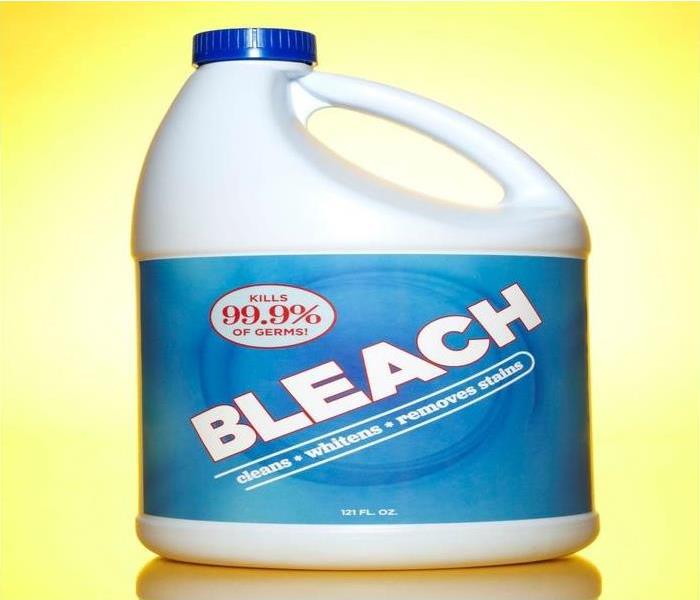When to Drop the Bleach and Call SERVPRO
9/16/2019 (Permalink)
Mold may seem like an easy fix to the untrained eye and the first "go to" fix it chemical in a home or business is bleach.
This first instinct thought used to be the recommendation by agencies such as OSHA and the EPA. However, they have since been revised after research revealed that the "do all, be all cure" for killing microbial growth actually had the opposite effect.
Mold needs water, which is their food, and typically a warm temperature to grow. Where there is water, there is most likely mold, this shows that even for a water job you may be able to dry yourself, give SERVPRO a call to dry it right as well as check for mold.
The chlorine in bleach, due to it's ionic composition, cannot penetrate porous surfaces. Porous surfaces include: drywall, ceilings, wood, carpet and many others. Spraying bleach on the mold will only kill it on the surface. Mold actually has roots called hyphae, these roots will still remain in the porous material and eventually grow enough to rise to the surface again. Bleach contains both chlorine and water, the chlorine cannot make it below the surface - but the water can. Therefore by putting bleach on the mold you are actually replenishing the mold with one of the key things it needs to grow - water! The bleach will "bleach" the color, making it appear that the mold is gone but again, it is only on the surface.
At SERVPRO of Omaha Southwest provides specifically made products, designed to travel deep into porous surfaces to remove mold at its roots. Sometimes, we cannot remove all of the mold from an item and that would then classify it as un-salvageable and will be removed from the location for the safety of you and your family or employees. In addition, live mold releases spores into the air, therefore the air in your home may need to be treated with specialty equipment to make sure that all spores are removed.





 24/7 Emergency Service
24/7 Emergency Service
